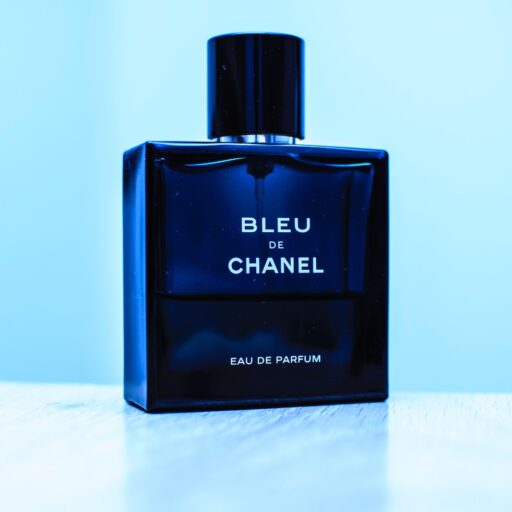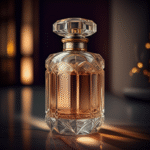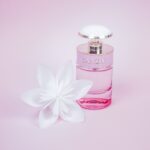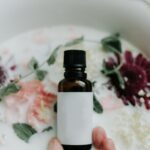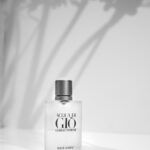Support our educational content for free when you purchase through links on our site. Learn more
What Is the Name for Perfume in Products? 10 Secrets Revealed! 🌸 (2025)
Have you ever stared at a beauty product label and wondered, “Wait, what exactly is the name for perfume in products?” You’re not alone! The world of fragrance labeling is a labyrinth of terms like “parfum,” “fragrance,” “eau de toilette,” and more — each carrying its own secret meaning and story. Whether you’re a perfume aficionado, a curious shopper, or an aspiring fragrance entrepreneur, understanding these names unlocks a whole new level of appreciation and savvy shopping.
But here’s the twist: the name on the bottle isn’t just a fancy label—it’s a powerful marketing tool, a cultural artifact, and a sensory promise all rolled into one. In this article, we’ll peel back the layers of perfume naming conventions, explore how top brands like Chanel and Dior craft their iconic scent identities, and share insider tips to help you name your own fragrance like a pro. Plus, we’ll reveal how to decode ingredient lists so you know exactly what you’re spritzing on your skin. Ready to sniff out the secrets? Let’s dive in!
Key Takeaways
- Perfume names and terms like “parfum,” “eau de parfum,” and “fragrance” indicate concentration, scent profile, and marketing strategy.
- Understanding these terms helps you choose the right product for your preferences and skin type.
- Top brands use creative naming strategies to evoke emotions and target specific demographics.
- Highlighting unique ingredients in a perfume name can differentiate your product in a crowded market.
- Free online tools and domain checkers can help you craft and protect your own perfume brand name.
Looking to explore iconic perfumes or find inspiration for your own scent? Check out these top brands:
- 👉 Shop Chanel No. 5 on: Amazon | Chanel Official
- 👉 Shop Dior J’adore on: Amazon | Dior Official
- 👉 Shop Jo Malone Pomegranate Noir on: Amazon | Jo Malone Official
Ready to name your own fragrance? Keep reading for expert tips and insider secrets!
Table of Contents
- Quick Tips and Facts about Perfume Names in Products ✨
- The Scented Story: Origins and Evolution of Perfume Naming 🕰️
- What Do We Call Perfume in Different Products? Understanding Fragrance Terminology 🧴
- 1. Eau de Parfum vs. Eau de Toilette vs. Eau de Cologne: What’s in a Name? 💧
- 2. Fragrance Concentrations Explained: From Perfume Extract to Body Mist 🌸
- 3. Decoding Ingredient Labels: What “Fragrance” Really Means on Your Product 🕵️♀️
- 4. The Role of “Parfum” in Cosmetics and Skincare: More Than Just a Pretty Smell 💄
- 5. How Brands Name Their Perfume Products: Creativity Meets Marketing Magic 🎨
- 6. Top Perfume Brand Naming Strategies: Lessons from Chanel, Dior, and Jo Malone 🏆
- Crafting Your Own Perfume Product Name: Tips for Aspiring Fragrance Entrepreneurs 🖋️
- Targeting Your Audience: How Perfume Names Influence Consumer Perception 🎯
- Innovate and Captivate: Using Unique Ingredients to Inspire Your Perfume Name 🌿
- Aligning Your Perfume Name with Customer Desires and Trends 🔮
- Looking for More Naming Inspiration? Free Tools and Resources to Spark Creativity 💡
- Domain Name Generators and Logo Makers for Your Perfume Brand Online 🌐
- How It Works: From Name Idea to Full Perfume Product Launch 🚀
- Still Haven’t Decided on the Perfect Perfume Product Name? Here’s What to Do Next 🤔
- Global Impact: How Perfume Naming Affects Brand Recognition Worldwide 🌍
- Shopify and E-commerce Solutions for Selling Your Perfume Products Online 🛒
- Customer Support and Developer Tools for Perfume Brand Websites 🛠️
- Conclusion: Naming Your Perfume Product Like a Pro and Smelling Success 💼
- Recommended Links for Perfume Product Naming and Branding 📚
- Frequently Asked Questions About Perfume Names in Products ❓
- Reference Links and Further Reading 🔗
Quick Tips and Facts about Perfume Names in Products ✨ [#quick-tips-and-facts-about-perfume-names-in-products]
- A rose by any other name…wouldn’t sell as well! The fragrance industry thrives on captivating names. 🌹
- Eau de What? Understanding fragrance terminology is key to deciphering product labels. 🤔
- Ingredient lists can be tricky! “Parfum” or “fragrance” can refer to a complex blend of scents. 🧪
- Brand names matter! They evoke emotions and influence our perception of a fragrance. The Fragrance Industry: 15+ Secrets Revealed! 🤫
- Don’t judge a perfume by its price tag alone. Some of the most expensive perfumes contain the same ingredients as more affordable options. 💰
The Scented Story: Origins and Evolution of Perfume Naming 🕰️ [#the-scented-story-origins-and-evolution-of-perfume-naming]
From ancient civilizations using fragrant oils in religious ceremonies to modern-day perfume houses crafting elaborate olfactory stories, the art of naming scents has always been intertwined with history, culture, and marketing.
A Whiff of the Past: Ancient Origins
- Egypt: The Egyptians were pioneers in perfumery, using ingredients like frankincense and myrrh. They often named their fragrant creations after gods and goddesses, believing scents to be divine gifts.
- Rome: The Romans embraced perfumes with gusto, using them lavishly in baths and social gatherings. Their fragrance names often reflected the origin of ingredients or the desired effect, such as “Rosa Gallica” (Gallic Rose) or “Amor Vincit Omnia” (Love Conquers All).
The Rise of Modern Perfumery
- The Renaissance: Perfumery flourished in Europe, with Italy and France emerging as centers of fragrance creation. Names often referenced royalty, mythology, or exotic locales.
- The 20th Century: The birth of modern marketing saw perfume names becoming shorter, catchier, and more evocative of emotions and aspirations. Think Chanel No. 5, a name that revolutionized the industry with its simplicity and mystique.
The Digital Age: Perfume Naming Today
- Storytelling through Scent: Modern perfume brands often craft elaborate stories around their fragrances, using names that evoke specific emotions, memories, or experiences.
- The Power of Social Media: Perfume names today need to be Instagrammable, memorable, and shareable, reflecting the influence of social media on consumer choices.
What Do We Call Perfume in Different Products? Understanding Fragrance Terminology 🧴 [#what-do-we-call-perfume-in-different-products-understanding-fragrance-terminology]
Navigating the world of fragrance can feel like learning a new language! Let’s break down the common terms you’ll encounter on product labels:
1. Eau de Parfum vs. Eau de Toilette vs. Eau de Cologne: What’s in a Name? 💧 [#1-eau-de-parfum-vs-eau-de-toilette-vs-eau-de-cologne-whats-in-a-name]
These French terms refer to the concentration of fragrance oils in a product, which directly impacts its intensity and longevity.
| Fragrance Type | Concentration | Longevity | Typical Notes |
|---|---|---|---|
| Perfume (or Parfum) | Highest (20-30%) | 6-8 hours | Rich, complex, long-lasting |
| Eau de Parfum (EDP) | High (15-20%) | 4-5 hours | Versatile, suitable for evening wear |
| Eau de Toilette (EDT) | Moderate (5-15%) | 2-3 hours | Lighter, fresher, ideal for daytime |
| Eau de Cologne (EDC) | Light (2-4%) | Up to 2 hours | Citrusy, refreshing, often unisex |
💡 Perfume Brand Tip: EDPs offer a good balance of projection and longevity, making them a popular choice.
2. Fragrance Concentrations Explained: From Perfume Extract to Body Mist 🌸 [#2-fragrance-concentrations-explained-from-perfume-extract-to-body-mist]
Beyond the basic categories, you’ll find even more specific terms:
- Perfume Extract: The purest and most concentrated form of fragrance, often sold in small, luxurious vials.
- Body Mist: The lightest concentration, offering a subtle scent.
3. Decoding Ingredient Labels: What “Fragrance” Really Means on Your Product 🕵️♀️ [#3-decoding-ingredient-labels-what-fragrance-really-means-on-your-product]
The term “fragrance” or “parfum” on an ingredient list can be a bit of a mystery. It represents a blend of aromatic compounds that give a product its scent. This blend is often a closely guarded secret, much like a chef’s special recipe!
💡 Perfume Brand Tip: If you have sensitive skin, look for products labeled “fragrance-free” to minimize the risk of irritation.
4. The Role of “Parfum” in Cosmetics and Skincare: More Than Just a Pretty Smell 💄 [#4-the-role-of-parfum-in-cosmetics-and-skincare-more-than-just-a-pretty-smell]
- Enhancing the Sensory Experience: Fragrances can evoke emotions, create a sense of luxury, and mask unpleasant base odors in products.
- Aromatherapy Benefits: Certain scents, like lavender or chamomile, are known for their calming properties.
- Branding and Identity: A signature scent can become synonymous with a brand, creating a memorable sensory association for consumers.
5. How Brands Name Their Perfume Products: Creativity Meets Marketing Magic 🎨 [#5-how-brands-name-their-perfume-products-creativity-meets-marketing-magic]
Naming a perfume is a delicate dance between capturing the essence of a scent and appealing to the target audience.
- Evoking Emotions and Memories: Fragrance names often aim to evoke specific feelings or memories, such as love, joy, or nostalgia.
- Reflecting the Scent Profile: The name might hint at the key notes of the fragrance, like “Rose Musk” or “Citrus Blossom.”
- Targeting a Specific Demographic: Brands carefully consider their target audience when choosing names, using language and imagery that resonate with their aspirations and lifestyles.
6. Top Perfume Brand Naming Strategies: Lessons from Chanel, Dior, and Jo Malone 🏆 [#6-top-perfume-brand-naming-strategies-lessons-from-chanel-dior-and-jo-malone]
Let’s take a whiff of inspiration from some iconic perfume houses:
- Chanel No. 5: A masterpiece of minimalism, this name became legendary for its simplicity and air of mystery.
- Dior J’adore: This name, meaning “I love” in French, exudes confidence and allure.
- Jo Malone Pomegranate Noir: This name paints a vivid olfactory picture, combining the sweetness of pomegranate with the dark mystery of noir.
💡 Perfume Brand Tip: Study the naming strategies of successful brands in your niche to gain insights into what resonates with your target audience.
Crafting Your Own Perfume Product Name: Tips for Aspiring Fragrance Entrepreneurs 🖋️ [#crafting-your-own-perfume-product-name-tips-for-aspiring-fragrance-entrepreneurs]
Creating a captivating perfume name is an art form. Here are some tips to guide you:
- Know Your Audience: Who are you trying to reach with your fragrance? What are their aspirations, lifestyles, and values?
- Tell a Story: What story do you want your fragrance to tell? What emotions or memories do you want to evoke?
- Keep It Concise and Memorable: A catchy, easy-to-remember name is essential for brand recognition.
- Check for Trademark Availability: Before you fall in love with a name, ensure it’s available for trademark registration.
Targeting Your Audience: How Perfume Names Influence Consumer Perception 🎯 [#targeting-your-audience-how-perfume-names-influence-consumer-perception]
The name of your perfume is the first impression it makes on potential customers. It can influence their perception of the scent, the brand, and even their willingness to try it.
- Luxury and Exclusivity: Names like “Oud Royale” or “Velvet Elixir” evoke a sense of opulence and sophistication, appealing to consumers seeking high-end fragrances.
- Youthfulness and Playfulness: Names like “Sugar Rush” or “Sun-Kissed Bloom” target a younger demographic with their bright and energetic connotations.
- Sophistication and Elegance: Names like “Midnight in Paris” or “Silk & Cashmere” suggest a refined and elegant scent profile.
Innovate and Captivate: Using Unique Ingredients to Inspire Your Perfume Name 🌿 [#innovate-and-captivate-using-unique-ingredients-to-inspire-your-perfume-name]
In a crowded market, highlighting a unique ingredient in your perfume name can be a powerful way to differentiate your brand.
- Exotic Botanicals: Names like “Madagascar Vanilla” or “Himalayan Cedarwood” evoke a sense of adventure and intrigue.
- Rare and Precious Notes: Using terms like “Oud,” “Ambergris,” or “Sandalwood” can signal luxury and exclusivity.
- Sustainable and Ethical Sourcing: Highlighting ingredients like “Organic Rose” or “Fair Trade Vetiver” can appeal to environmentally conscious consumers.
Aligning Your Perfume Name with Customer Desires and Trends 🔮 [#aligning-your-perfume-name-with-customer-desires-and-trends]
The world of fragrance is constantly evolving. Staying attuned to current trends and consumer preferences is crucial for choosing a name that resonates.
- Wellness and Self-Care: Names like “Calm & Collected” or “Inner Peace” reflect the growing focus on mental well-being.
- Sustainability and Naturalness: Names like “Earth Song” or “Wild Bloom” appeal to consumers seeking eco-friendly options.
- Gender Neutrality and Inclusivity: Fragrance names are moving away from traditional gender binaries, with more brands embracing unisex and gender-fluid scents.
Looking for More Naming Inspiration? Free Tools and Resources to Spark Creativity 💡 [#looking-for-more-naming-inspiration-free-tools-and-resources-to-spark-creativity]
Stuck in a naming rut? These tools can help get your creative juices flowing:
- Thesaurus and Rhyming Dictionaries: Explore synonyms, antonyms, and rhyming words to expand your options.
- Online Perfume Name Generators: These tools can provide a starting point for brainstorming, though it’s important to personalize and refine the suggestions.
Domain Name Generators and Logo Makers for Your Perfume Brand Online 🌐 [#domain-name-generators-and-logo-makers-for-your-perfume-brand-online]
Once you have a shortlist of potential perfume names, it’s time to check their availability as domain names and start building your brand identity online.
- Domain Name Generators: These tools allow you to see which domain names are available for your chosen perfume name.
- Logo Makers: Create a visually appealing logo that represents your brand’s essence and complements your perfume name.
How It Works: From Name Idea to Full Perfume Product Launch 🚀 [#how-it-works-from-name-idea-to-full-perfume-product-launch]
- Brainstorming and Research: Gather inspiration, research your target audience, and explore current trends.
- Shortlist and Refinement: Narrow down your favorite names and test them with your target audience.
- Trademark and Domain Check: Ensure your chosen name is legally protected and available online.
- Branding and Packaging: Develop a cohesive brand identity that reflects your perfume’s name and story.
- Launch and Promotion: Introduce your fragrance to the world with a compelling marketing campaign.
Still Haven’t Decided on the Perfect Perfume Product Name? Here’s What to Do Next 🤔 [#still-havent-decided-on-the-perfect-perfume-product-name-heres-what-to-do-next]
- Don’t Rush the Process: Take your time and allow the perfect name to emerge organically.
- Seek Feedback from Others: Share your shortlist with trusted friends, family, or industry professionals.
- Trust Your Instincts: Ultimately, the best perfume name is one that resonates with you and feels authentic to your brand.
Global Impact: How Perfume Naming Affects Brand Recognition Worldwide 🌍 [#global-impact-how-perfume-naming-affects-brand-recognition-worldwide]
In an increasingly interconnected world, perfume names need to translate well across cultures and languages.
- Cultural Sensitivity: Avoid names that could be offensive or have negative connotations in other cultures.
- Linguistic Considerations: Ensure your chosen name is easy to pronounce and understand in your target markets.
Shopify and E-commerce Solutions for Selling Your Perfume Products Online 🛒 [#shopify-and-e-commerce-solutions-for-selling-your-perfume-products-online]
In today’s digital age, having a strong online presence is crucial for perfume brands.
- Shopify: A popular e-commerce platform that makes it easy to create an online store and sell your products.
- Social Media Marketing: Utilize platforms like Instagram and Facebook to connect with potential customers and promote your brand.
Customer Support and Developer Tools for Perfume Brand Websites 🛠️ [#customer-support-and-developer-tools-for-perfume-brand-websites]
Providing excellent customer service is essential for building brand loyalty.
- Live Chat: Offer real-time support to customers browsing your website.
- FAQ Section: Address common questions and concerns in a comprehensive FAQ section.
Conclusion: Naming Your Perfume Product Like a Pro and Smelling Success 💼

Wow, what a fragrant journey we’ve taken together! From unraveling the mysteries behind perfume terminology to decoding the art and science of naming your scent, you’re now equipped with the insider knowledge to make your perfume product name shine like a star in the crowded fragrance cosmos. 🌟
Remember, a perfume name isn’t just a label—it’s the first emotional connection your customers make with your scent. Whether you’re inspired by exotic botanicals, targeting a niche demographic, or channeling the timeless elegance of Chanel or Dior, your name should tell a story that resonates deeply.
If you’re launching your own perfume, keep these takeaways in mind:
- Be authentic and evocative: Your name should reflect the soul of your fragrance.
- Know your audience: Tailor your naming strategy to their desires and trends.
- Check availability: Trademark and domain name clearance are non-negotiable.
- Leverage tools: Use free name generators, logo makers, and domain checkers to streamline your process.
And if you’re still wondering how to get started or stuck on that perfect name, don’t fret—sometimes the best ideas come when you least expect them. Keep experimenting, seek feedback, and trust your instincts.
Now, go forth and create a perfume brand that not only smells divine but sounds unforgettable! Your scent empire awaits. 🚀
Recommended Links for Perfume Product Naming and Branding 📚
Ready to explore some iconic perfumes and get inspired? Check these out:
-
Chanel No. 5:
Amazon | Chanel Official Website -
Dior J’adore:
Amazon | Dior Official Website -
Jo Malone Pomegranate Noir:
Amazon | Jo Malone Official Website -
Books on Perfume Naming and Branding:
- The Perfume Lover: A Personal Story of Scent by Denyse Beaulieu
Amazon Link - Perfumes: The A-Z Guide by Luca Turin and Tania Sanchez
Amazon Link
- The Perfume Lover: A Personal Story of Scent by Denyse Beaulieu
Frequently Asked Questions About Perfume Names in Products ❓
What is the most popular fragrance family in perfumes?
Answer:
The Floral fragrance family reigns supreme worldwide. It encompasses scents derived from flowers like rose, jasmine, and lily, which are universally loved for their versatility and romantic appeal. According to Fragrantica, floral perfumes account for a significant portion of sales globally, favored by both men and women for their timeless elegance.
How do perfume concentrations affect the scent of a fragrance?
Answer:
Perfume concentration determines how strong and long-lasting a fragrance is. Higher concentrations like Perfume Extract or Eau de Parfum contain more aromatic oils (15-30%), leading to richer, longer-lasting scents. Lighter concentrations such as Eau de Toilette or Body Mist have less oil (2-15%), offering a more subtle scent ideal for casual wear. This affects not only longevity but also projection and sillage (how far the scent travels). For more details, see our Perfume Guides.
What are the different types of perfume ingredients used in fragrances?
Answer:
Perfumes blend natural and synthetic ingredients to create complex scent profiles. Natural ingredients include essential oils from flowers, woods, spices, and resins (e.g., rose, sandalwood, ambergris). Synthetic molecules replicate natural scents or create novel aromas not found in nature. Ingredients are categorized into top, middle, and base notes, which unfold over time to give a perfume its character. For a deep dive, check out our Perfume History and Evolution articles.
How do I choose the right perfume brand that suits my taste and preferences?
Answer:
Choosing a perfume brand is about matching your personality, lifestyle, and scent preferences. Start by identifying fragrance families you enjoy (floral, oriental, woody, fresh). Consider the brand’s reputation for quality and innovation—houses like Chanel, Dior, and Jo Malone offer distinct styles and craftsmanship. Sampling perfumes in-store or ordering samples online helps you experience scents firsthand. Also, read reviews on trusted sites like our Fragrance Reviews. Remember, your signature scent should make you feel confident and happy!
Reference Links and Further Reading 🔗
- LVMH Perfumes & Cosmetics – Official Site
- Chanel Official Website
- Dior Fragrance Collection
- Jo Malone London
- Fragrantica – Perfume Encyclopedia
- International Fragrance Association (IFRA)
- Perfume Brands™ – Perfume Guides
- Perfume Brands™ – Fragrance Reviews
- Perfume Brands™ – Perfume History and Evolution
Ready to name your perfume like a pro? Dive into our guides and start crafting your scent story today! 🌸
